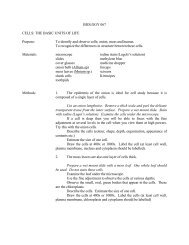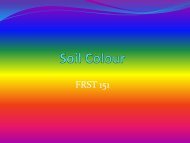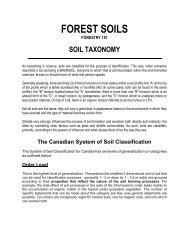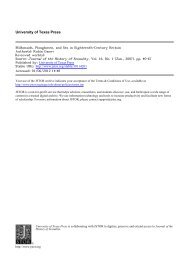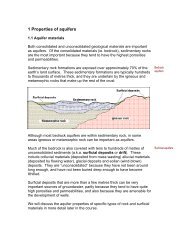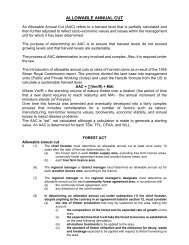Assignment #3: Plate Tectonics - web.mala.bc.ca - Vancouver Island ...
Assignment #3: Plate Tectonics - web.mala.bc.ca - Vancouver Island ...
Assignment #3: Plate Tectonics - web.mala.bc.ca - Vancouver Island ...
Create successful ePaper yourself
Turn your PDF publications into a flip-book with our unique Google optimized e-Paper software.
Geology 111 and Geol 111A – Understanding Planet Earth<br />
A confirmation of the Vine-Matthews-Morley hypothesis was made in 1966, when W. Pitman<br />
analyzed several profiles of sea-floor magnetization across the Pacific-Antarctic Ridge (Figure<br />
3), and found that one of the profiles, the Eltanin-19 profile, Figure 4, showed remarkable<br />
symmetry, exactly as implied by the hypothesis.<br />
In this exercise you will make a number of predictions based on the VMM hypothesis, and then<br />
use some magnetic data to test them. Some useful predictions are as follows (although you might<br />
be able to think of others):<br />
since the spreading at a ridge is symmetri<strong>ca</strong>l on either side of the ridge axis, the pattern of<br />
positive and negative magnetism should also be symmetri<strong>ca</strong>l,<br />
magnetic profiles at various points along a ridge, and at different ridges around the world,<br />
should be generally comparable,<br />
the positive and negative magnetic features should correlate with the known chronology<br />
of magnetic-field reversals, and<br />
the corresponding rates of spreading (as determined from the magnetic chronology)<br />
should be consistent with typi<strong>ca</strong>l oceanic-ridge spreading rates (i.e. a few cm/year)<br />
Figure 4 Sea-floor magnetic anomalies from the Eltanin-19 traverse.<br />
Earth Science Department <strong>Vancouver</strong> <strong>Island</strong> University 6



